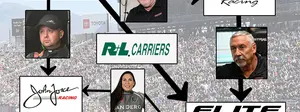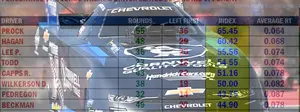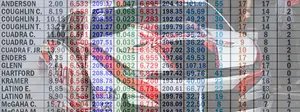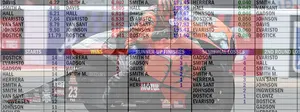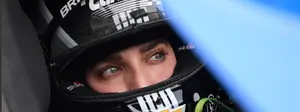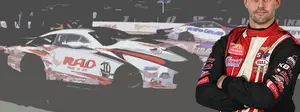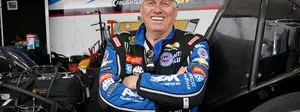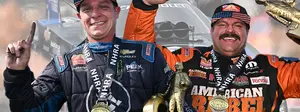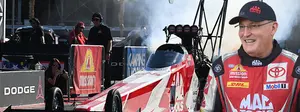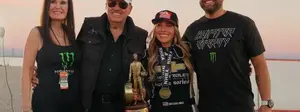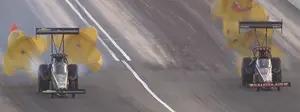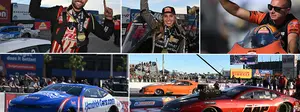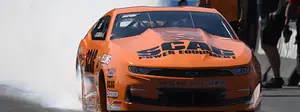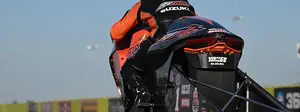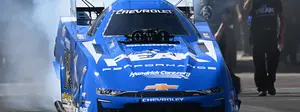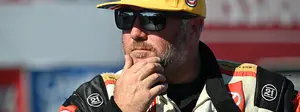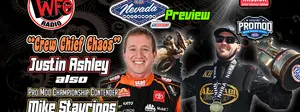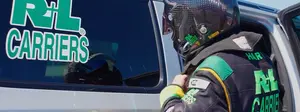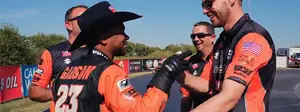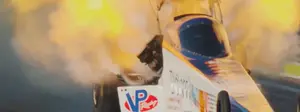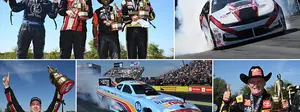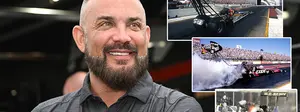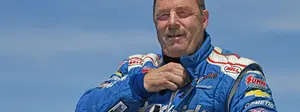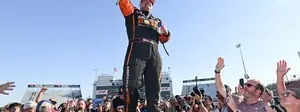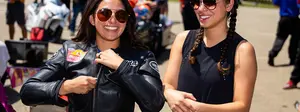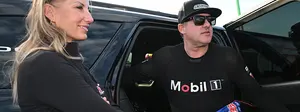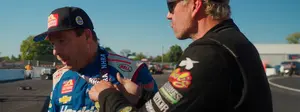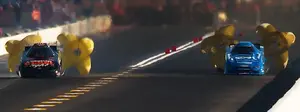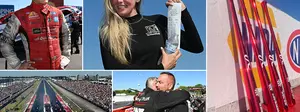

What goes into the planning and running of The World’s Biggest Drag Race?

What goes into the running of the world’s biggest and richest drag race, the Dodge Power Brokers NHRA U.S. Nationals? What does it take to plan, organize, schedule, promote, and stage six days of thrilling action on the fabled course at Lucas Oil Indianapolis Raceway Park?
With so much on the line as the final event of the regular season in the 2023 NHRA Camping World Drag Racing Series, and with so much history and prestige, and the attention of the motorsports world focused on the famed dragstrip, things have to go right, but it doesn’t happen all by itself. Like the finely tuned machines that battle for straight-line glory every Labor Day weekend, it takes a crew to build, maintain, and run the Big Go.
MAKING A PLAN

For all intents and purposes, planning for the 69th annual Big Go started not long after the 68th edition was completed last September and maybe even during as notes are routinely created at an event detailing issues that need attention or improvement that are compiled and studied solutions created.
A rigorous agenda of pre-event meetings, some formal, some informal, dotted the calendars of staff members charged with specific parts of making the event happen.
As the months and weeks trickled down to the event, the plans and daily schedules were refined and expanded as new elements were added and became more detailed as the puzzle pieces began to fall into place from both a competition and entertainment standpoint. Massive video conferences were held to allow all responsible parties to bring everyone else up to speed and to check on pertinent details.
GETTING REVVED UP
Tickets for the 2023 Dodge Power Brokers NHRA U.S. Nationals went on sale last November, just two months after the 2022 event, but in the months leading up to the event, NHRA’s promotions staff began a multi-channel marketing campaign writing and producing dozens of television, radio, and in-venue commercials, doing everything from designing graphics, writing scripts, and video editing.
Determinations are made as to which channels will drive the most impact, and NHRA also partnered with some social influencers. A final media campaign lasted approximately five weeks and comprised more than 12,000 spots plus NHRA’s own in-house social media content on Facebook, Instagram, TikTok, and X.
Teams and drivers will help get the word out about the event through offers and social pushes, and we truly appreciate their help spreading the word.

On the media and PR side, there was a comprehensive effort all summer to bring plenty of attention to the U.S. Nationals. The Media Relations departments worked closely with community organizations and local professional sports teams early in the summer, had Cruz Pedregon’s Funny Car placed in the airport, and worked extensively with local and national media leading up to the Big Go.
In all, drivers did upwards of 35 interviews with local and national media (television, podcasts, radio, and newspaper) leading up to the world’s biggest drag race through media tours, press conferences, and Zoom media conferences. At the event, the NHRA credentialed more than 130 media members and serviced their varying interview and multimedia needs throughout the course of the event, including the scheduling and hosting of live press conferences at the end of each day and also hosted more than a dozen special guests as well, including local influencers, WWE wrestlers, NFL players, and more.
SETTING THE STAGE

Getting a facility as big and grand as Lucas Oil Indianapolis Raceway Park ready for a huge influx of race teams, fans, and sponsors was a Herculean task.
In addition to putting a fresh coat of paint on the racetrack and the surrounding facility, more than 300 acres of grass in the pit area had to be mowed low and tight for race-car parking (including the grassy area in front of the pit-side grandstand that was replanted in mid-June after the track’s Ultimate Callout Challenge tractor-pull event) and more than a mile of fence covering was installed (and later uninstalled).

Racetrack staff coordinated with local fire, police, and emergency medical responders to have their teams on site and also coordinated with state/federal inspectors as required for an event of this size and scope.
The group also had to contract parking teams, gate security, and trash and waste removal, the Installation of power for all temporary food and beverage vendors, and, of course, plan for post-event cleanup. Caterers are contracted to create food for suites and the Top Eliminator Club guests.
IMAGINE ALL THE PEOPLE

It takes more than a village to raise a race, including more than 200 full- and part-time employees who were assigned to the event. Local staff and inbound hiring filled some of the need, which included security personnel, ticket takers, ushers, custodians, and concession workers. More than 120 flights, rental cars, and hotel rooms that had to be coordinated and booked for staff traveling to the event from around the country, including race operations, television and media, marketing, and executives.
Event workers in crucial areas such as the starting-line team, Safety Safari, technical inspection, pit control, racer registration, credentials, time slips, fuel check, scales, and turnaround crew had to be assigned.
THE RACE IS ON
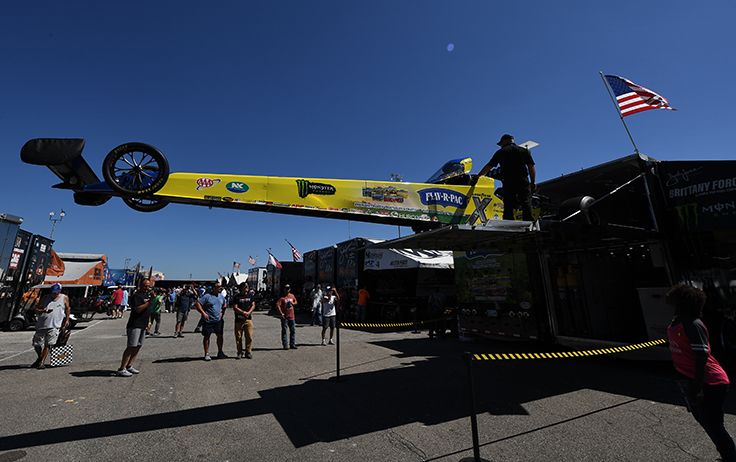
Even though the first race cars did not begin blasting down the fabled racecourse until Wednesday morning, parking of more than 800 race teams began Sunday morning as the competitors were directed to their assigned pit areas, a process that was closely mapped and tightly coordinated in the days leading up to the event.
Everything is mapped out across the facility, from competitor pit areas to the locations of the fuel and tire distribution centers, the television compound, and the midway displays. Signage is determined and placed throughout the facility and alongside the racetrack, and accommodations are made for Friday’s Youth & Education Service program that will welcome more than 2,000 local high school students and the buses that bring them.
Areas are marked out on the starting line for crew chief, sponsor, and influencer viewing while at the other end of the track, the top-end area is created with assigned areas for race cars and television crews, and the addition of more than a dozen sponsor inflatables are blown up and perfectly positioned for maximum background exposure from the television cameras.
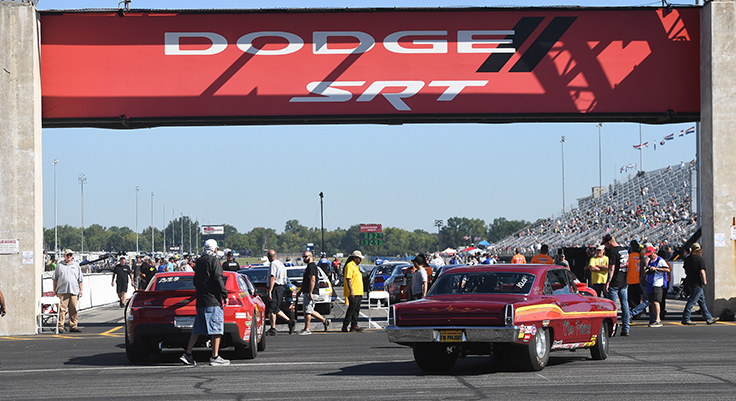
Racing began at 8 a.m. Wednesday, and over the next six days, race cars were racing down the quarter-mile for nearly 70 combined hours and nearly 4,500 passes. From Wednesday through Sunday, the track was in operation at least 12 hours each day, not counting the two hours of pre- and post-race prep each day by the NHRA Safety Safari.
Scheduling for the six is created well in advance, and with so many specialty events taking place — including Friday’s Dodge Hemi Challenge and RoofTec Comp Cash Clash, Saturday’s Mission #2Fast2Tasty NHRA Challenge, and Sunday’s Pep Boys NHRA Funny Car All-Star Callout — in addition to the competition in 16 categories, there’s a lot to be packed into each day.
The schedule is dynamic to account for unexpected delays, such as oildowns, accidents, and weather as well as live television windows that have to be met, all of which needs to be coordinated and communicated to the teams, officials, and media.
A SHOW WITHIN A SHOW
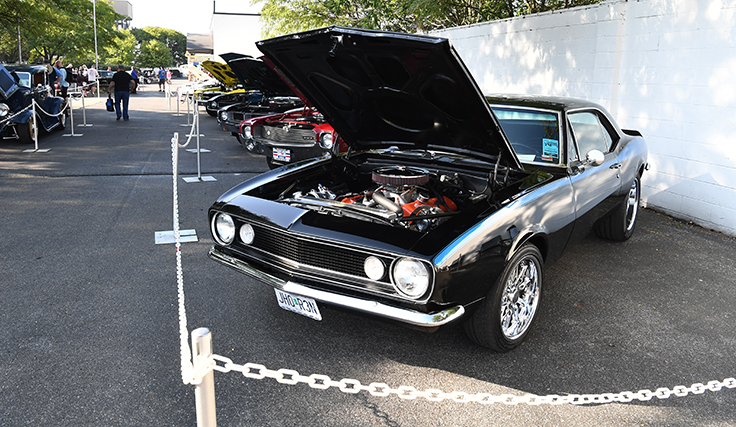
In addition to the action on the track, fans have plenty to see and do in the pit areas and concourses throughout the track, all coordinated by NHRA’s Live Events department.
A display of vintage race and street cars six months in the making was created in Hot Rod Junction in the concourse behind the main grandstand, which also was the site of daily Cacklefests, where some of the vintage iron roared to life in a static display.
Once the competition schedule is confirmed, the department also creates a schedule of non-race-conflicting, fan-friendly events throughout the pits and especially on NHRA’s Nitro Alley main stage, where fans can enjoy a variety of live shows, including Nitro School, Just the Basics, Total Seal Tech Talk, and 10 Questions, as well as special features to be hosted in the Top Eliminator Club.
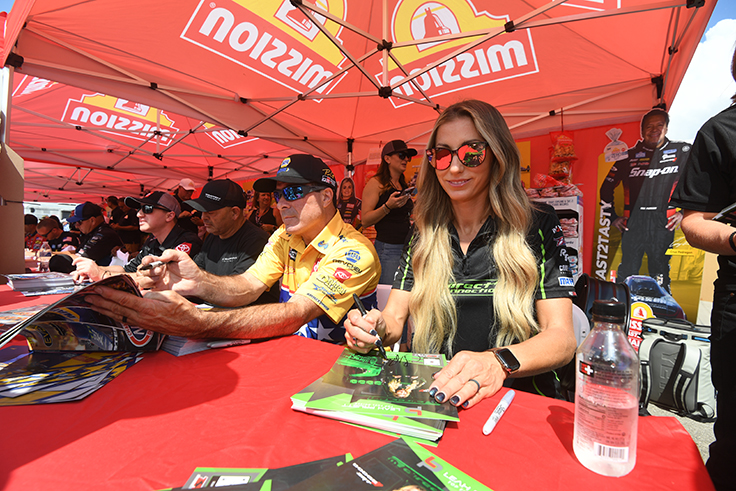
Numerous autograph sessions were also coordinated and scheduled for Dodge, Mission Foods, Toyota, Pro Mod drivers, and the eight participants in the Pep Boys NHRA Funny Car All-Star Callout, requiring much coordination between NHRA marketing personnel and team managers.
Content is cultivated or created for the big screens to keep fans informed and entertained with everything from video features and trivia quizzes to text-to-win promotions and other fan-facing prompts. Much planning goes into the creation of this playlist, including sponsor obligations and enough material to potentially keep fans entertained for extended periods in the case of a weather or on-track delay, and has its own team: a director, producer, camera operators, and video operator.
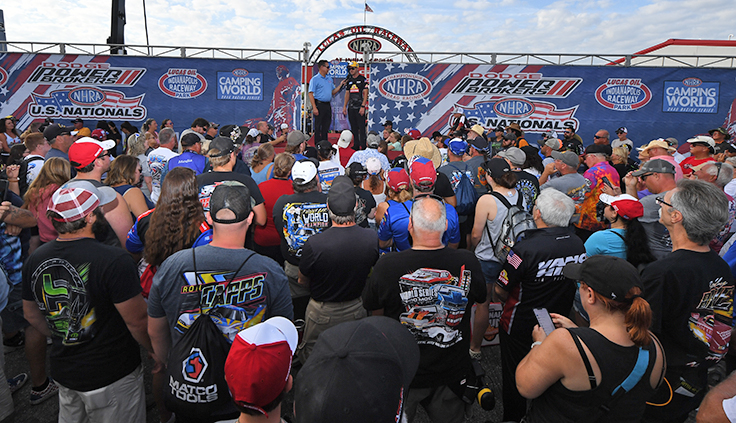
The pre-race ceremony is scripted, and talent is acquired for the singing of the national anthem, presentation of colors, and the Racers for Christ invocation, all preceded by the coordination of the massive SealMaster NHRA Track Walk that allows fans to traverse the famed quarter-mile for an up-close look at the site of so much history.
TELLING THE STORY
A race as big and prestigious as the Dodge Power Brokers NHRA U.S. Nationals requires that its story be told across multiple channels from television to local and national media as well as NHRA’s own in-house teams for social media, web, and print.

The NHRA television team produced 10 1/2 hours of original shows covering qualifying, elimination, and the Pep Boys NHRA Funny Car All-Star Callout, plus dedicated shows for the NHRA Lucas Oil Drag Racing Series and FuelTech NHRA Pro Mod Drag Racing Series that aired after the event, plus a special NHRA in 30 show capturing the event’s top five moments.
A television crew of 60 deftly handled the assignment, deploying 25 cameras that included both stationary and wireless cameras, plus the Lucas Oil helicopter and Pep Boys drone and more than 50 microphones were placed across the facility to capture the thunder and action of the world’s most powerful motorsport.

More than 60 miles of fiber cable was run across the facility, including cabling to support 20 gigabytes of internet for delivery of TV assets to FOX/NHRA.TV/Social and 5.5 terabytes of content created and distributed through more than 60 hours of live streaming to the NHRA.tv channel.
The NHRA on FOX television shows drew an impressive audience as nearly 2.1 million viewers tuned into original airings.

NHRA National Dragster magazine reporters and photographers chronicled the event, before, during, and after with dozens of articles as well as daily photo galleries and videos that were posted on NHRA.com and its social media channels, then retold the story through its popular monthly print magazine to tens of thousands of NHRA Members around the globe.
NHRA’s dedicated social media team generated reams of content that delivered more than 8.5 million impressions across multiple channels and 3.5 million video views across Facebook and YouTube.
All told, it took the combined efforts of hundreds of people working perfectly in concert for months to get the Dodge Power Brokers NHRA U.S. Nationals from the staging lanes to the winner’s circle, and to add another chapter to the history books of one of motorsports’ most famous and prestigious drag races. Even those who have been around the sport for decades and take the running of these events almost for granted – heck, we do it more than 20 times a year every year – it’s still amazing how much work goes into the preparation and running of an event, how many pieces need to come together, and how it all seems to magically happen without fail.
With the U.S. Nationals celebrating its 70th birthday next year, you can be sure that the same dedicated staff of professionals are already gearing up for the 2024 edition of the Big Go.
| U.S. NATIONALS BY THE NUMBERS | |
| 6 | Days of racing |
| 25 | Television cameras |
| 50 | Microphones |
| 60 | Miles of fiber cable |
| 63.5 | Hours of on-track action |
| 130 | Media credentials |
| 200 | Full and part-time workers |
| 300 | Acres of pit area grass mowed |
| 835 | Entries |
| 4,324 | Competition passes |
| 2.1 million | Television viewers |
| 8.5 million | Social media impressions |























